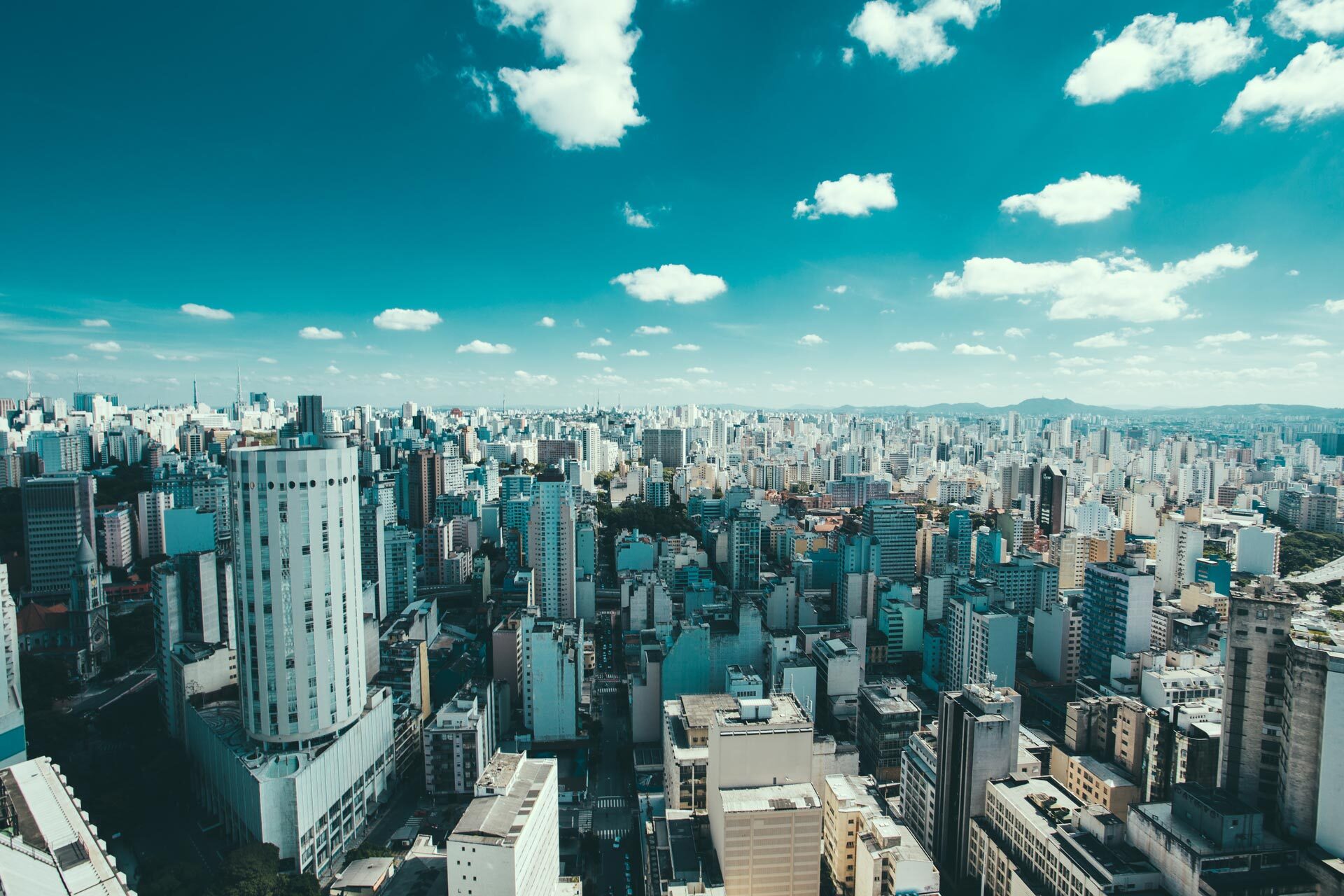 Credit: Envato | cookelma
Credit: Envato | cookelmaOpportunities in Emerging Markets
Are Brazil, Mexico, and India on track for a real estate boom?
CEO, GRI Club
13 years after President Luiz Inácio Lula da Silva completed his second term as president of Brazil, he has returned to the office once more. After presiding over the 2008 financial crisis, Lula once again finds himself in a world standing on the verge of financial crisis, albeit this time in the wake of a global pandemic. Not only this, but we also find ourselves in the midst of a geopolitical situation the likes of which we haven’t seen since the Cold War. It is in this climate that certain emerging markets - in particular Brazil, Mexico, and India - have a unique opportunity to capitalise on the current state of affairs and ride this new wave to considerable economic growth in the real estate sector.
Lula’s first two terms were also notable for the emerging prominence of BRICS, but today we must confront a much different scenario. With the Russo-Ukrainian War seemingly set to continue for the foreseeable future, Russia has become a pariah to most, largely falling off the world stage with regards to international investment. China too finds itself increasingly isolated as tensions mount and new regulations are introduced. The economic impacts are being seen already, with the country’s top real estate developer posting a loss for the first time since going public in 2007. South Africa, with unemployment levels above 30% and the finance, real estate & business services industry shrinking by 2.3% in Q4 2022, has also become an increasingly unattractive option for investors.
Once the current inflationary crisis in more developed countries is at least minimally under control, we will witness a drop in the yield curve. As a result, capital owners will again be forced to look for investment options in emerging markets, as they know that the most aggressive returns can be found precisely there. Allow me to explain why Brazil, Mexico, and India could be the wisest choices available to investors today.
Brazil

The real estate sector in Brazil fared very well during the first two Lula administrations, directly impacted by an attractive environment for both national and international investments, in addition to social development policies that stimulated it further, as in the case of the “Minha Casa, Minha Vida'' public housing program. Could we see a repeat of these positive developments with the current federal administration? Certainly.
The more than 2 million investors in Real Estate Funds have already brought reasonable liquidity to the market, something that did not exist during the first Lula administrations. The sector may see a return to calmer seas if all this potential is well taken advantage of by the president and his team.
We have witnessed the departure of many international investors in recent years, especially real estate investors, who we can - at least in part - welcome back during this window of opportunity. On the other hand, if I had to place a bet – especially based on what I've been hearing in Brazil, the US, and Europe – maybe it's the right time for new investors to have their turn. After all, those who are already seasoned in this sector know that it is by nature cyclical, and this current cycle seems to be heading for positive results with the inflow of international capital.
We have already started to notice an increase in queries from European and American investors in recent weeks - which is a great sign - but full realisation of this potential will only come from concrete actions by the national government to ensure a truly attractive environment for capital. To ensure that we actually see a new wave of foreign investors arriving or returning to invest in the Brazilian real estate sector, we must see more pragmatism from the Lula administration.

1 - Expansion of the Green Agenda
As home to the largest natural ecosystem in the world - the Amazon - Brazil has the perfect opportunity to lead this conversation. Knowing how to take advantage of this status can boost strategic alliances and create the opportunity for highly favourable agreements.
2 - Neutrality amid international conflicts
Analysing Brazilian foreign policy, the country has always stood out for seeking neutrality in times of conflict. With geopolitical conflicts raging on, Brazil seems determined not to "pick a fight" and this could directly result in gains. A good part of the national posture towards the world has been guided by objectivity, and the results could bear out the greater economic benefits of neutrality.
3 - Deglobalization and new strategic partners
If globalisation determined that commercial partnerships were decided on the basis of cost-benefit ratios, the new world dynamic tends to favour the strategic benefits one country can offer another, in addition to financial considerations. No one seems willing to be dependent on a single supplier for their whole supply chain any more, as has been seen to happen with China for many years. A lack of industrial competitiveness has always weighed against Brazil, but now the equidistant position in conflicts can result in new business opportunities.
4 - Destination of international investments
It is true that, during the first Lula administrations, BRICS looked upon Brazil as its darling member, but the current moment may be even more favourable. This is where Brazil's "luck" of "being in the right place at the right time" can make all the difference.
Brazil seems to have a golden opportunity to once again surf a positive wave of international investment influx. In a world with double-digit inflation rates, as in the UK, Brazil seems to have the situation relatively under control. The growth potential remains strong and, with a minimum of reforms and administrative reorganisation, it could be the main beneficiary of this international turmoil.
Mexico

Mexico has held up well amidst all the post-pandemic turmoil and, economically, seems more mature in certain regards than Brazil. The country also has several factors that make it an attractive destination for real estate investment, with a diversified economy and a young, growing population resulting in increased demand for housing and commercial properties. The country's proximity to the United States and its membership in USMCA (known as T-MEC in Mexico and CUSMA in Canada) have also made it a key strategic location for businesses seeking to expand their operations in the region.
The Mexican government has implemented a number of policies to encourage foreign investment in the real estate sector, such as allowing foreigners to own property and creating real estate investment trusts (REITs) that provide tax incentives for investors. This comes on top of the country’s recent economic successes in the industrial sector, which saw e-commerce play an increasingly prominent role.
A further boom to the sector has developed as a result of the US-China trade crisis, with the pace of nearshoring increasing even faster than experts predicted. This has brought a significant volume of manufacturing opportunities as US companies move their operations from Asia to Mexico. The ongoing consolidation of the T-MEC logistics corridor - at a cost of USD 3.3bn - further cements the dedication being shown to nearshoring, with the full project expected to be operational by 2027.

President Andrés Manuel López Obrador - commonly known as AMLO - has experienced healthy popularity ratings since his election in 2018 and successfully rebooted Mexican relations with the US following Joe Biden’s election in 2020. This means that the current period of stability in the nation stands a solid chance of remaining, at least until the upcoming presidential election in 2024. AMLO has repeatedly reaffirmed his commitment to following the constitution and will not seek reelection, although many Mexican citizens wish that he would. While a number of Latin American countries have fallen to authoritarianism in recent years, López Obrador’s refusal to seek an unconstitutional second 6-year term sends a strong signal about the country’s commitment to democracy.
From what I’ve been hearing, Portuguese and Spanish investors are likely to be the primary investors from Europe when it comes to foreign investors in both Brazil and Mexico. The historical and cultural ties between these countries give them more familiarity with the region - not to mention the languages - making them more likely to invest in these markets.
All of the latest developments in Brazil and Mexico will be discussed at Latin America GRI Real Estate 2023 and Latam GRI Infra & Energy 2023 in New York City on May 11-12, with industry leaders from across the region in attendance.
India

Economic progress and an increase in disposable income across India have led to a higher demand for a better lifestyle, creating significant potential for future growth in the country’s real estate sector. The Indian government has also implemented policies to support the sector, such as the Real Estate (Regulation and Development) Act, which aims to protect homebuyers and improve transparency in the real estate market through the introduction of a Real Estate Regulatory Authority (RERA) in each state.
The Indian government has also allowed foreign direct investment (FDI) in the real estate sector, which has attracted foreign investors looking for high returns in a growing market. Healthy investment activity is being witnessed across asset classes, especially in the emergent alternate classes such as data centres, co-living, and life sciences. However, India can still pose a challenge for foreign investors due to bureaucratic obstacles and regulations. The legal framework for real estate transactions in India is complex, and foreign investors may face difficulties navigating it. The issues we see are often related to property ownership, land acquisition, and zoning laws.
 Credit: Satya Nandigam | Pexels
Credit: Satya Nandigam | PexelsUS investment in India remains strong - especially in the data centres sector - and, based on current trends, this could well be followed by increased investor interest in the country from Europe. The influx is most likely to originate out of the United Kingdom, which still has strong ties with its former colony. A significant proportion of these investments come from Non-Resident Indians (NRIs) living in the US, UK, and Singapore, who face far fewer restrictions and bureaucratic regulations than other investors.
India GRI 2023 will take place on September 20-21, making it the perfect destination to find out how the situation is progressing for the country.
Conclusion
The real estate markets in Brazil, Mexico, and India have shown resilience and a potential for growth that is unmatched in the face of a new wave of economic challenges and political instability. There is no doubt that the current turmoil impacting the global banking system and the interest rate fluctuations are impacting the motivations of global investors, putting capital holders on a path to seek more stability and security for their money. But, once the interest rate begins to decline and the turbulence passes behind us, these 3 countries have some serious potential to come out of this crisis as the top destinations for foreign investors. We await, vigilantly, for the scenes of the next chapter to play out so that this immense business potential actually has fertile soil in which to grow.







